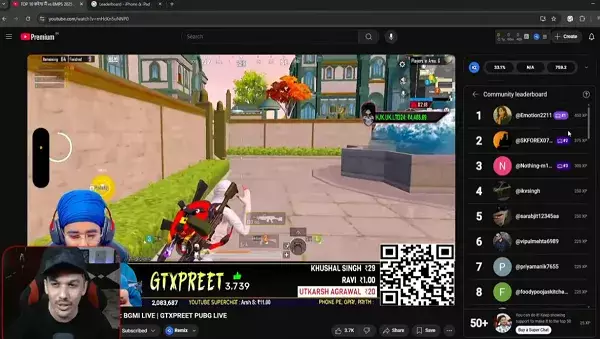In an age where content consumption is increasingly interactive, YouTube is stepping up its game with an innovative approach to engage viewers during livestreams. The platform’s latest feature introduces a gamified engagement leaderboard, designed to amplify audience interaction in real-time. By tapping into competitive spirit, this initiative could redefine how creators and viewers interact, but it also raises questions about the essence of viewer participation.
How the Engagement Leaderboard Works
The leaderboard aims to reward viewers for their participation by ranking them based on accumulated experience points (XP). These points are derived from actions such as sending comments, utilizing Super Chats, or gifting stickers during streams. The inclusion of a crown icon signifies a viewer’s placement and provides an immediate sense of recognition. Viewers are encouraged to strive for a top spot on the leaderboard, transforming the chat environment into an engaging social arena.
Creators are expected to benefit not just from heightened interaction but also financially, as an increase in Super Chats and stickers translates to better revenue. The integration of badges for the top three most engaged viewers adds another layer of motivation, allowing them to stand out in the active chat flow. However, in focusing on this competitive angle, it’s essential to ponder whether it genuinely enhances the viewing experience or merely commodifies audience interaction.
Is Engagement Worth the Cost of Authenticity?
While the gamification approach seems promising, one must critically examine its implications on genuine engagement. Is turning interactions into a ranking system really a step forward? It risks creating an environment where viewers feel pressured to perform for recognition rather than participate organically. This could lead to superficial engagement, where quantity overshadows the quality of conversations happening in the chat.
Moreover, emphasizing competition might alienate more casual viewers who are there to enjoy the content rather than compete for a place on a leaderboard. By creating a dichotomy between engaged and passive viewers, YouTube could inadvertently reduce the diversity of interactions, making the overall experience less inclusive.
The Implications for Creators and Audience Relationships
For creators, this feature might seem like an attractive tool for audience engagement. However, the relationship between creators and their followers could shift dramatically. Instead of fostering a community where every viewer feels valued, we could witness a culture that prizes the loudest and most frequent participants. Creators may find themselves inadvertently favoring these “top” viewers, potentially alienating regular fans who bring their unique insights and support without the need for a competitive edge.
Although you might consider this leaderboard as a harmless fun element, the overarching implications it has on engagement, audience dynamics, and community richness warrant a closer examination. Will this new norm contribute positively to the creator ecosystem, or will it morph into a shallow facade masked as engagement? The future of livestream interaction on YouTube is poised at an intriguing yet precarious crossroads, and only time will reveal its true impact.

